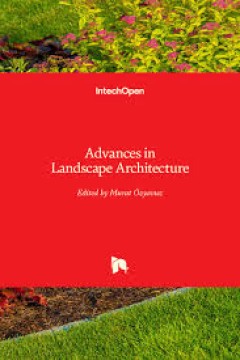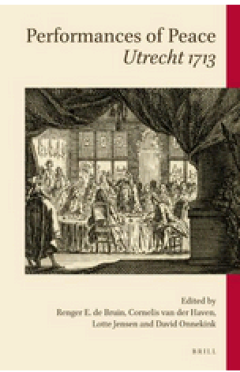Filter by

"Colonised by Wankers"; Postcolonialism and Contemporary Scottish Fiction
Apakah Skotlandia telah menderita dari penindasan kolonial oleh Inggris selama 300 tahun terakhir? Meskipun historiografi mungkin menjawab dengan negatif, studi ini mengungkapkan bahwa novel Skotlandia kontemporer dihantui oleh perasaan kuat, ditandai oleh persepsi aib dan inferioritas sebagai respons terhadap konstruksi Inggris sebagai dominan. Mengambil dari korpus novel Skotlandia kontempore…
- Edition
- -
- ISBN/ISSN
- 9783946198314
- Collation
- 1 online resource (260 p.)
- Series Title
- -
- Call Number
- 820.9358 SCH c

Printing Spinoza ; A Descriptive Bibliography of the Works Published in the S…
Dalam Printing Spinoza, Jeroen van de Ven secara sistematis memeriksa semua edisi cetak abad ketujuh belas dari tulisan-tulisan Spinoza, yang diterbitkan antara 1663 dan 1694, serta varian 'isu' mereka. Fokusnya adalah pada deskripsi Spinoza tahun 1663 tentang 'Prinsip-Prinsip Filsafat' René Descartes dengan 'Pemikiran Metafisik'nya sendiri, 'Tretis Teologis-Politik' (1670), dan tulisan-tulisa…
- Edition
- -
- ISBN/ISSN
- 9789004467996
- Collation
- online resource (, p.)
- Series Title
- Perpustakaan Karya Tulis
- Call Number
- 192.8016 VEN p

Advances in Landscape Architecture
The purpose of this book, is to reveal the landscape planning and design in recent years. For this purpose, chapters were selected on the topics of different landscape architecture study. Landscape architecture is the design of outdoor and public spaces to achieve environmental, socio-behavioral, and/or aesthetic outcomes. It involves the systematic investigation of existing social, ecologi…
- Edition
- -
- ISBN/ISSN
- 9789535111672
- Collation
- 940
- Series Title
- -
- Call Number
- -

Physics in Minerva’s Academy; Early to Mid-Eighteenth-Century Appropriation…
Monograf ini menjelaskan bagaimana, setelah pertempuran mengenai filosofi René Descartes, filosofi alam Newton menemukan tanah subur di Universitas Leiden. Pandangan dan metode filosofis alam Newton, bersama dengan perbedaan yang mendasarinya, selaras dengan kebijakan institusi-agama Universitas Leiden, yang mendorong para profesor dan mahasiswa untuk memisahkan teologi dari filsafat. Selain i…
- Edition
- -
- ISBN/ISSN
- 9789004716162
- Collation
- online resource ( XV, 460 Pages)
- Series Title
- Budaya Ilmiah dan Terpelajar serta Lembaga-lembaga Mereka
- Call Number
- 530.0949233 DUC p

Performances of Peace: Utrecht 1713
Perjanjian Utrecht (1713), yang mengakhiri Perang Suksesi Spanyol, adalah tonggak sejarah global. Pertunjukan Perdamaian bertujuan untuk memikirkan kembali arti penting Perjanjian Utrecht dengan menjelajahi hubungan antara budaya dan politik. Terlalu lama, sejarawan budaya dan politik telah mempelajari hubungan internasional awal modern secara terpisah. Dengan mempelajari aspek politik serta bu…
- Edition
- -
- ISBN/ISSN
- 9789004304789
- Collation
- online resource ( XV, 288 Pages)
- Series Title
- -
- Call Number
- 949.20433 BRU p

Rock Art and the Rock Surface: Neolithic Rock Art Traditions of Britain, Irel…
This chapter explores the rock art of the British Isles and northernmost Europe, highlighting contrasts between the regional patterns and considering some points of similarity in the effects of producing rock art. Acknowledging the difficulty with identifying a Neolithic period in northern Scandinavia, the range of Scandinavian rock art that is likely to have been made in the period c. 4000–1…
- Edition
- -
- ISBN/ISSN
- -
- Collation
- oer.unej.ac.id
- Series Title
- Oxford Handbooks
- Call Number
- Oxford Handbooks Online

4000 Years of Migration and Cultural Exchange: The Archaeology of the Batanes…
The project reported on in this monograph has been concerned with the archaeology of the Batanes Islands, an archipelago that must have been settled quite early in the process of Austronesian dispersal from Taiwan southwards into the Philippines. A multi-phase archaeological sequence covering the past 4000 years for the islands of Itbayat, Batan, Sabtang and Siayan is presented, extending from …
- Edition
- -
- ISBN/ISSN
- -
- Collation
- -
- Series Title
- -
- Call Number
- -

«A Marvellous and Strange Event» Racconti di nascite mostruose nell'Inghil…
In early modern England, the birth of a human being with congenital physical deformities was an event which aroused horror and fascination, disgust and morbid curiosity. In a time when modern science was taking its first steps, this kind of prodigy sometimes appeared as a sort of divine punishment for a moral fault, sometimes as a bizarre pastime, or political weapon, or a pre-medical investiga…
- Edition
- -
- ISBN/ISSN
- 9788864533452
- Collation
- oer.unej.ac.id
- Series Title
- Premio Tesi di Dottorato,
- Call Number
- -

“Colonised by Wankers”: Postcolonialism and Contemporary Scottish Fiction
"Has Scotland suffered from colonial oppression by England for the last 300 years? While historiography may give an answer in the negative, this study reveals that the contemporary Scottish novel is haunted by strong feelings, marked by perceptions of abjection and inferiorisation in response to constructing the English as dominating. Drawing from an unprecedented corpus of contemporary Scottis…
- Edition
- -
- ISBN/ISSN
- 9783946198314
- Collation
- -
- Series Title
- -
- Call Number
- -

Greening the Greyfields : New Models for Regenerating the Middle Suburbs of L…
- Edition
- -
- ISBN/ISSN
- 978-981-16-6238-6
- Collation
- -
- Series Title
- -
- Call Number
- -
- Edition
- -
- ISBN/ISSN
- 978-981-16-6238-6
- Collation
- -
- Series Title
- -
- Call Number
- -
 Computer Science, Information & General Works
Computer Science, Information & General Works  Philosophy & Psychology
Philosophy & Psychology  Religion
Religion  Social Sciences
Social Sciences  Language
Language  Pure Science
Pure Science  Applied Sciences
Applied Sciences  Art & Recreation
Art & Recreation  Literature
Literature  History & Geography
History & Geography